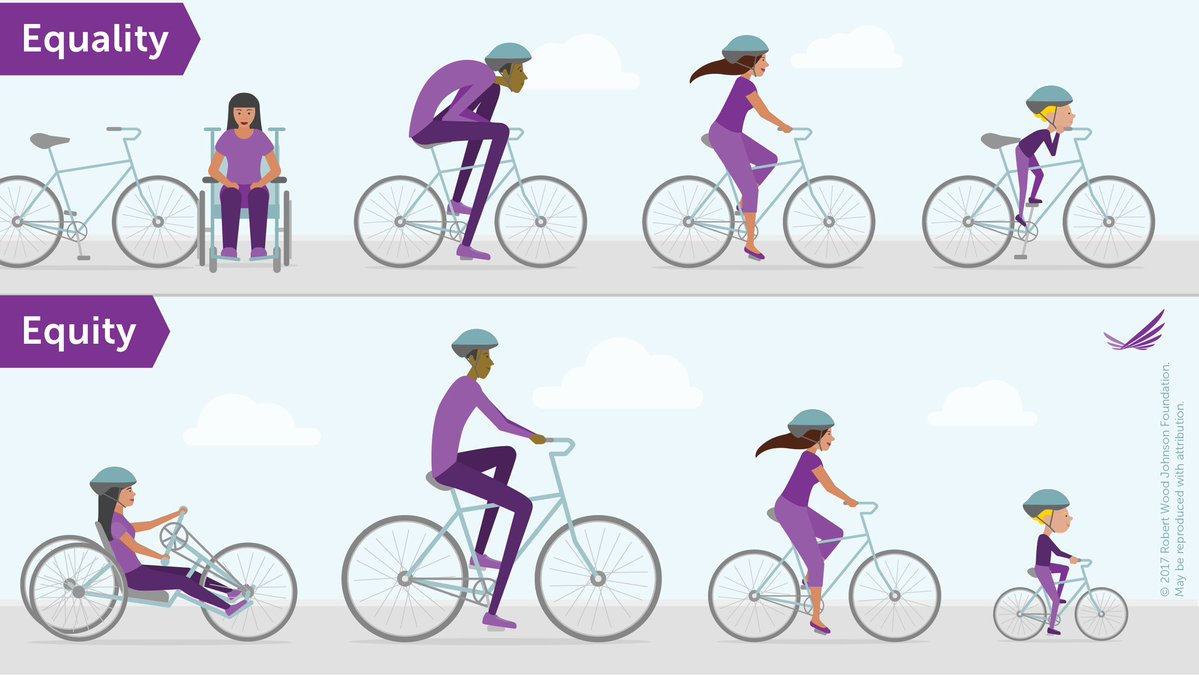5. Equity and Equality
Equity and Equality
Addressing gender inequality is ultimately a quest for fairness; an equal chance for all individuals to fully participate and succeed in our clubs and programs. When trying to ensure everyone has equal opportunities, that things are fair, we often default to the strategy of treating everyone the same. This is the concept of equality.
In our society, much of our early learning around fairness is informed by equality or equal treatment. As children our concept of fairness often looked like “I get a turn, then you get a turn,” or “I get two cookies, and you get two cookies”. However, if everyone is different, does treating everyone the same provide for fairness?
An unknown author once claimed that “Everybody is a genius. But if you judge a fish by its ability to climb a tree, it will live its whole life believing that it is stupid”. We cannot erase the fact that we all have individual differences, a fish is not a monkey, and that cannot be changed.
The path to fairness then is to look at systematic obstacles. Would we assess a fish’s success by its ability to climb a tree? Absolutely not. If we accept that we all have individual differences then creating equal opportunities for success must focus on trying to remove barriers to equal participation and success by redesigning the system (in our case the design and delivery of our programs).

Another example to highlight the difference between equity and equality:
Consider a scenario where a soccer team is gearing up for a tournament, and the concepts of equity and equality come into play. With an equality mindset, the emphasis is on uniformity—every player is given the same jersey, identical shorts, and matching shoes. However, upon closer inspection, it becomes evident that all the soccer players have different-sized feet. The coach, adhering to an equality mindset, provides each player with the exact same shoes. This approach, though well-intentioned, overlooks the individual needs of the players.
In contrast, an equity mindset recognizes and responds to the unique requirements of each player. The coach, adopting an equity approach, ensures that every player receives shoes tailored to their specific foot size, prioritizing comfort and functionality. In this context, fairness is achieved not through identical treatment but by addressing the diverse needs of the players. This analogy illustrates that equity involves acknowledging and accommodating individual differences to foster a truly level playing field, surpassing the limitations of a one-size-fits-all approach.
The Role of Equity in Gender Equality
As you just explored, at their core, equity and equality are two different strategies aimed at achieving fairness. While equality aims to achieve fairness by treating everyone the same, equity takes into account what people will need to have fair opportunities for success and therefore sometimes differentiated treatment is necessary to provide for equal opportunities. This is where equity differs as a strategy for creating fair opportunities to all.
Gender equity in STEM education programming then is treating men, women, trans people in response to individual needs. This can include equal treatment and differentiated treatment in various circumstances and contexts. In our next section, we will explore practical ways of providing for gender equity in all STEM education programming.
Gender Equity
- Getting Started
- 1. Introduction
- 2. Girls and Women* in STEM
- 3. Unconscious Bias
- 4. Defining Gender
- 5. Equity and Equality
- 6. Creating Gender Equity Across All Programming
- 7. Actua’s National Girls Program and Gender Parit…
- 8. Case Study
- 9. Summary and Reflection
- Survey
- Credits, References and Resources
Viewed 4,491 times